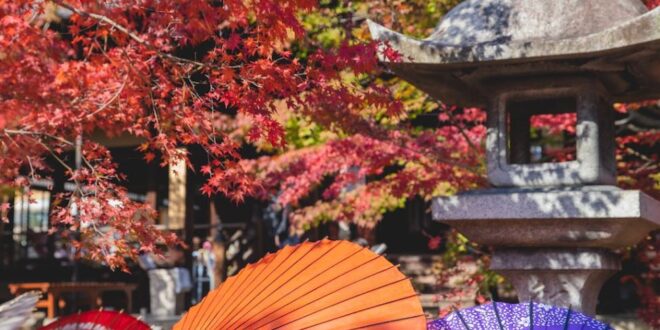Japanese Maple Trees are quite popular, among gardeners and landscapers who seek a tree with remarkable foliage. The Japanese Maple, scientifically known as Acer Palmatum is a tree that originally came from East Asia and has now become an addition at https://www.gardenersdream.co.uk and to gardens and parks worldwide.
Japanese Maples come in a range of varieties each boasting its distinct traits. You’ll find some that’s perfect, for gardens while others can reach towering heights of up to 25 feet. Certain ones flaunt cascading branches while others stand tall, with an appearance. With such a selection to choose from there’s bound to be a Maple that fits seamlessly into any garden or landscaping endeavour.
Origins and Description
Japanese Maple Trees, also known as Acer Palmatum, are trees that originate from Japan, China and Korea. They are highly regarded for their appearance and foliage making them popular choices, for purposes. These trees usually have a rounded shape growing to a height of 15 to 20 feet. They feature trunks with bark in shades of grey or brown.
The Japanese Maple Tree is an addition to any garden due to its eye-catching leaves. These leaves have 5-9 palmate or dissected lobes. Come in a variety of colours such as red, green, purple, yellow, orange, pink and cream. Throughout the seasons the colours of the leaves change, adding to their allure. During springtime, new leaves emerge in shades while in autumn some cultivars display reds and oranges. Gardeners and landscapers often choose this tree for its form and captivating colours when designing their gardens.
Cultivars and Their Characteristics
Japanese maples come in a selection of cultivars each showcasing its distinct qualities and attributes. Among the cultivars are Bloodgood, Dissectum, Coral Bark, Weeping, Cascading, Lacy, Upright, Rounded and Spreading varieties.
Bloodgood is a favoured variety, due to its deep red foliage. This small tree can reach a height of up to 5 meters. Spread out over an area of 4 meters. On the other hand, Dissectum showcases cut leaves that lend it an elegant lace-like appearance. This growing tree typically attains a height of 2 meters. Coral Bark, another cultivar stands out with its vibrant red bark. Similar in size to Bloodgood this small tree can grow, up to 4 meters tall. Extend over an area of 3 meters wide.
We have cultivars, with different forms and sizes Weeping, Cascading, Lacy, Upright, Rounded and Spreading. Weeping and Cascading cultivars are notable for their branches that cascade creating a weeping effect. Lacy cultivar stands out with its cut leaves that give it a look. On the other hand, the Upright cultivar has a formal growth habit with an upright structure. As for Rounded and Spreading cultivars, they exhibit a relaxed spreading growth pattern.
Conclusion
Japanese Maple Trees are highly sought after by both gardeners and beginners due to their leaves and elegant growth patterns. These trees can thrive in environments, including gardens, containers and even as bonsai specimens. With their range of sizes, they can effortlessly complement any garden space.
However, taking care of them requires some care. They thrive in a lightly shaded spot with soil that drains well. It’s important to water. Fertilize them regularly to ensure their growth and beauty. While they may demand a bit more attention, than trees the outcome is worth it. Japanese Maple Trees have a captivating elegance and distinctive characteristics that can truly elevate the charm of any garden.
 Gardeners Club The Gardeners Club is a free to join online club for everyone with an interest in gardening and gardens.
Gardeners Club The Gardeners Club is a free to join online club for everyone with an interest in gardening and gardens.






